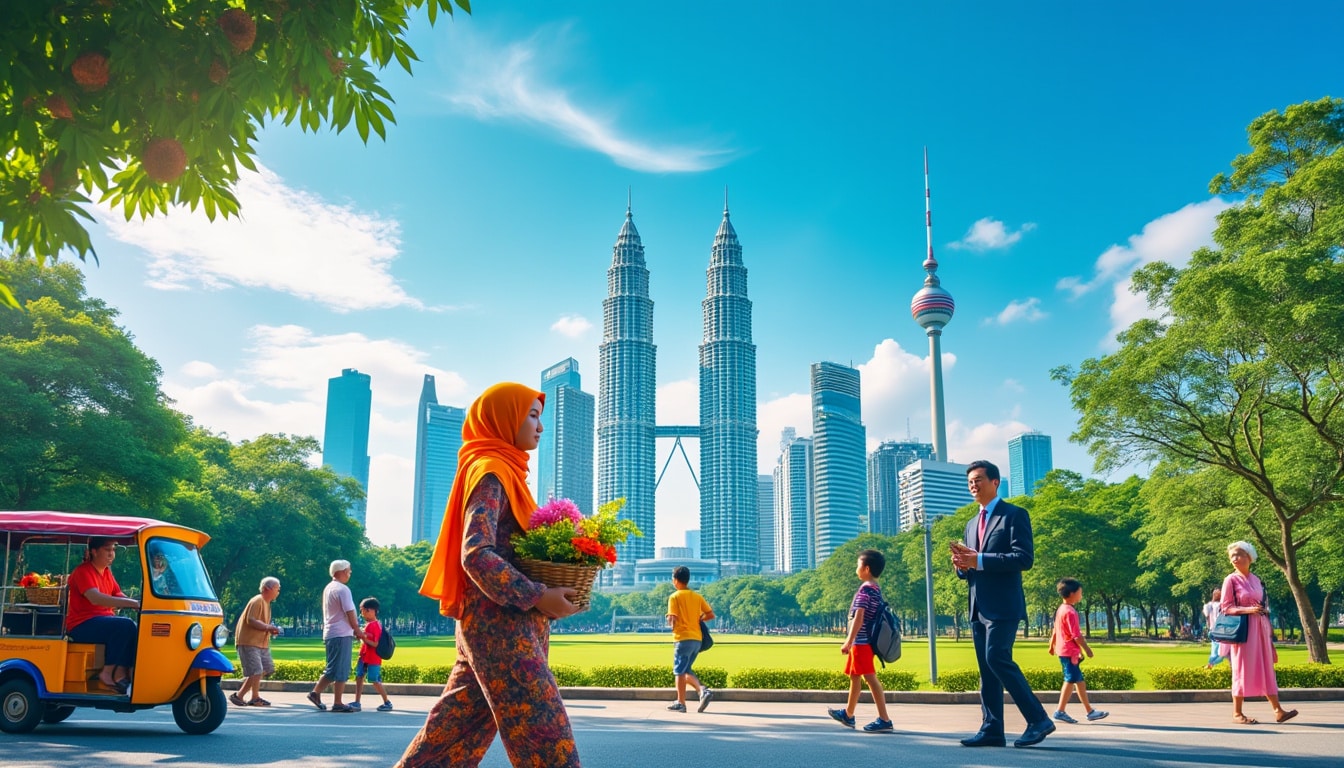The demographics and geography of Kuala Lumpur present a vivid tapestry of cultures and landscapes, shaping this vibrant capital city of Malaysia. Renowned for its cultural diversity, Kuala Lumpur, or simply “KL”, stands as a beacon of Malaysia’s rich history and rapid urban development. As a melting pot of Asian cultures, it has become a bustling cosmopolitan hub, drawing visitors and residents alike. With a population that exemplifies a remarkable blend of Malay, Chinese, and Indian communities, among others, Kuala Lumpur’s demographics tell a story of harmony and diversity. Nestled within the Klang Valley and characterized by its tropical rainforest climate, this city offers a unique geographical landscape that influences both its urban planning and lifestyle.
Kuala Lumpur: A Demographic Mosaic
Kuala Lumpur is a city where diversity thrives, reflecting Malaysia’s larger identity as a multicultural nation. In 2025, the city boasts a population of over 2 million residents, making it the most populous city in Malaysia. This urban agglomeration, often referred to as Greater Kuala Lumpur, encompasses a wider metropolitan population exceeding 8.8 million, highlighting its status as a major Southeast Asian metropolis. The city’s populace is an intricate mix of ethnic groups, with Malays, Chinese, and Indians making up the bulk. According to Statista, Malays, also known as Bumiputera, represent approximately 45.9% of the population, while the Chinese account for about 43.2%, and Indians make up around 10.3%. These figures emphasize the city’s multicultural fabric, where a blend of traditional customs and modern influences coexist.
Beyond these major groups, Kuala Lumpur is home to a myriad of other ethnicities and expatriate communities, contributing to its international appeal. The presence of Europeans, Middle Easterners, and Southeast Asians further enriches the city’s cultural landscape. This international blend is evident in the city’s culinary scene, arts, and diverse festivals celebrated throughout the year.
The demographic landscape of Kuala Lumpur is also shaped by its younger population. Nielsen’s research from recent years highlights that Kuala Lumpur is a youthful city, with a significant portion of its residents under the age of 35. This youthful demographic contributes to the city’s vibrancy and dynamic atmosphere, evident in its thriving nightlife, burgeoning tech scene, and innovative enterprises.
Key Population Statistics:
- 📊 Population: Over 2 million within the city; 8.8 million in Greater Kuala Lumpur
- 🌏 Dominant Ethnic Groups: Malays (45.9%), Chinese (43.2%), Indians (10.3%)
- 🌟 Youth Influence: A significant proportion under the age of 35

Cultural Harmony in a Cosmopolitan Hub
The coexistence of diverse ethnic groups in Kuala Lumpur is not merely about statistics; it’s about cultural harmony that translates into everyday life. The city is dotted with richly adorned mosques, vibrant Hindu temples, and serene Buddhist shrines, often located in close proximity to each other. This coexistence is a testament to Kuala Lumpur’s spirit of tolerance and mutual respect, where cultural and religious festivities are shared and celebrated across communities.
Economically, this diversity fuels innovation and growth, with a workforce that blends traditional skills and modern expertise. The Chinese community, historically involved in commerce and trade, plays a pivotal role in business and economic advancements. Meanwhile, the Indian community’s influence is prominent in professional sectors such as medicine, engineering, and law.
The vitality of Kuala Lumpur’s demographics is also marked by the increasing participation of women across various sectors. With rising educational attainment and career opportunities, women in Kuala Lumpur are actively contributing to the city’s socio-economic development. This shift is aligned with global trends highlighted by Pew Research Center, noting the significance of women in shaping modern economies.
Geographical Features of Kuala Lumpur
Situated in the Klang Valley, Kuala Lumpur’s geographical landscape is as diverse as its demographics. The city is nestled against the backdrop of the imposing Titiwangsa Mountains, providing a breathtaking contrast to its urban hustle. Spread across an area of 243 km², the city’s topography is a mix of valleys and hilly terrains, contributing to its distinct urban planning needs.
Kuala Lumpur’s geographic location offers logistical advantages, linking the Strait of Malacca to the west and the South China Sea to the east, making it a strategic hub for trade and travel. This geographic positioning has historically facilitated the city’s growth as a key economic center in the region. The city’s location near the equator grants it a tropical rainforest climate, characterized by high humidity and consistent temperatures throughout the year. The climate is significantly influenced by monsoons, with heavy rainfall experienced especially during the northeast monsoon from October to March.
| 🗺️ Feature | Description |
|---|---|
| 🌄 Topography | Mix of valleys and hills; surrounded by Titiwangsa Mountains |
| 🌡️ Climate | Tropical rainforest; high humidity and consistent temperatures |
| 🚜 Land Area | 243 km² (approx.) |
Flooding is a common concern given the city’s topography and heavy monsoon rains. However, extensive urban planning and modern infrastructure have mitigated some of these challenges. Investments in drainage systems and flood mitigation projects reflect efforts to adapt to the climatic realities while ensuring sustainable urban development. Bain & Company suggests that Kuala Lumpur’s approach to integrating nature with urban growth could serve as a model for other rapidly growing cities.
Urban Biodiversity and Environmental Initiatives
Despite the challenges posed by rapid urbanization, Kuala Lumpur is committed to preserving its natural environment. The city is home to several parks and green spaces, offering a refuge from the urban sprawl. These green lungs include the renowned Kuala Lumpur Bird Park and the Perdana Botanical Gardens, vital for maintaining biodiversity within the city limits.
Recent partnerships between the city government and environmental organizations, like those observed by McKinsey & Company, have led to initiatives aimed at promoting sustainable practices. These include efforts to reduce carbon emissions and enhance urban greenery, aligning with global trends towards more sustainable urban living.
Kuala Lumpur’s Urban Development and Districts
Urban development in Kuala Lumpur is a tale of modernity interwoven with history, as the city continues to expand and evolve. The city is divided into several districts, each with its unique characteristics and charm. From the iconic Petronas Towers in KLCC to the bustling streets of Bukit Bintang, Kuala Lumpur offers a wide array of lifestyles and living experiences.
The development of Kuala Lumpur has been marked by significant landmarks and infrastructural advancements. The KLCC area, with the towering Petronas Towers, represents the zenith of the city’s aspiration to be a global city. It is surrounded by high-end shopping malls and luxury hotels, making it a central hub for business and tourism.
Each district in Kuala Lumpur offers something distinct:
- 📌 KLCC: Business and financial district with iconic skyscrapers.
- 📌 Bukit Bintang: Renowned for shopping, dining, and entertainment.
- 📌 Chinatown: Cultural and historical area known for its markets.
- 📌 Brickfields: Also known as Little India, rich in Indian culture and cuisine.
- 📌 Chow Kit: Traditional market area known for its street vendors.
The rapid urbanization in Kuala Lumpur is evident in the construction of newer districts like Damansara and Bangsar, known for their upscale residential areas and flourishing nightlife. These emerging areas showcase a blend of local and expatriate communities, supported by a network of roads and public transport.
Architectural Marvels and Infrastructure
One cannot speak of Kuala Lumpur without mentioning its architectural evolution. The city’s skyline is a mix of colonial-era structures and modern architectural marvels, representing its journey from a tin mining settlement to a global city. The Sultan Abdul Samad Building, with its Moorish design, stands testament to the city’s rich colonial history, while structures like the Telekom Tower and the Petronas Twin Towers highlight its futuristic aspirations.
Recent years have seen significant investment in public infrastructure, with new rail lines and highways improving connectivity across the Klang Valley. According to Kantar, Kuala Lumpur’s focus on enhancing public transport aligns with efforts to reduce traffic congestion and promote sustainable urban mobility.
The Future of Kuala Lumpur: Opportunities and Challenges
Kuala Lumpur is poised at a crossroads of continued growth and sustainability. The city’s economic, cultural, and geographic elements provide both opportunities and challenges that need to be navigated carefully. As a vibrant metropolis, Kuala Lumpur is a crucial player in Malaysia’s aspirations to become a high-income nation by 2030.
Economically, the city continues to attract foreign investments, bolstered by its strategic location and robust financial services sector. From tourism to technology start-ups, Kuala Lumpur is a magnet for business ventures. The city’s development strategies, as noted by Ipsos, emphasize innovation and resilience, aiming to balance modernization with cultural preservation.
| 🔍 Opportunity | Description |
|---|---|
| 🌐 Tourism | Diverse cultural experiences and attractions |
| 🖥️ Technology | Growing tech start-up ecosystem and innovation hubs |
| 💼 Business | Financial services and international trade opportunities |
Despite these opportunities, Kuala Lumpur faces challenges typical of rapidly developing urban centers. Managing urban sprawl, environmental sustainability, and housing affordability remain critical concerns. Strategies to mitigate flood risks and combat pollution are essential to ensure a higher quality of life for its residents.
The city’s focus on education, healthcare, and infrastructure development underpins its vision for the future. As McKinsey & Company observes, Kuala Lumpur’s approach to urban planning serves as a blueprint for other cities in similar stages of growth.
Resilience and Adaptation
In navigating future challenges, Kuala Lumpur displays a resilience rooted in its historical capacity for adaptation. From colonial times to independence and beyond, the city has consistently reinvented itself. This resilience is echoed in its community spirit, where diverse cultures come together to create a unified urban identity.
Kuala Lumpur’s continued growth trajectory depends on collaborative efforts across sectors, ensuring balanced development that honors its natural and cultural heritage. As the city looks towards the future, it aims to marry tradition with innovation, crafting a narrative that resonates globally and locally.
FAQ
Q1: What is the population density of Kuala Lumpur?
A1: Kuala Lumpur has a population density of approximately 8,157 inhabitants per square kilometer, making it one of the most densely populated areas in Malaysia.
Q2: How does Kuala Lumpur manage its cultural diversity?
A2: Kuala Lumpur manages its cultural diversity through inclusive policies and community engagement, celebrating a wide range of cultural festivals and promoting cross-cultural understanding.
Q3: What are some major challenges facing Kuala Lumpur’s urban development?
A3: Key challenges include managing urban sprawl, improving infrastructure, reducing environmental impact, and ensuring affordable housing. Addressing these issues is crucial for sustainable growth.
Q4: How does Kuala Lumpur’s climate affect its urban planning?
A4: The tropical rainforest climate, characterized by heavy rainfall and humidity, influences urban planning by necessitating robust flood management systems and infrastructure to handle rainwater efficiently.
Q5: What is Kuala Lumpur’s role in Malaysia’s economy?
A5: Kuala Lumpur serves as Malaysia’s economic, financial, and cultural heart, contributing significantly to GDP through services, commerce, and international trade.
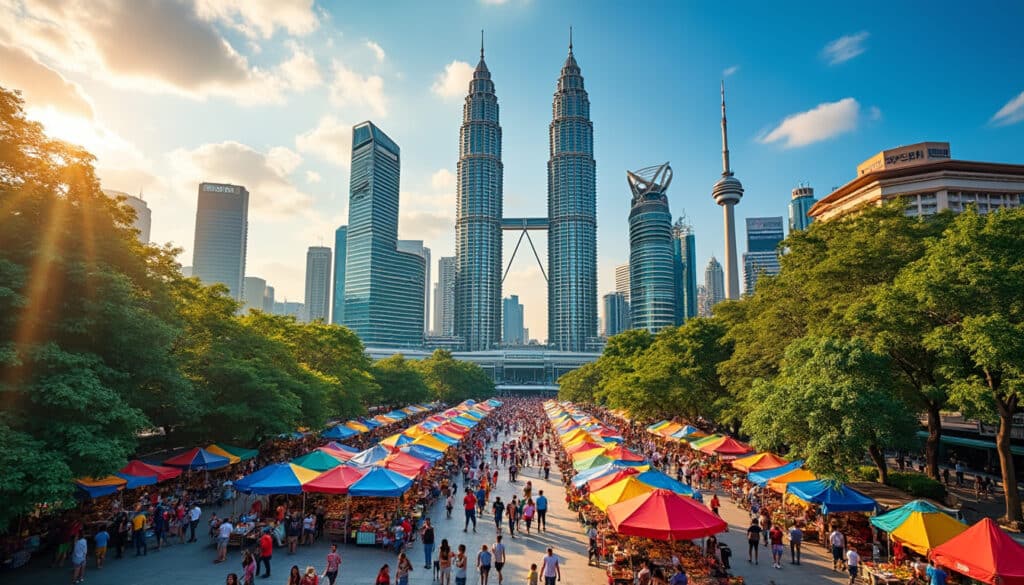
Fun Facts & Curiosities About Kuala Lumpur
Welcome to the multifaceted world of Kuala Lumpur, a city that captivates with its vibrant cultural tapestry and awe-inspiring landmarks. Known for the towering Petronas Twin Towers and its bustling street food scene, Kuala Lumpur stands as a testament to…

Architecture and urban features of Kuala Lumpur
Kuala Lumpur, a vibrant metropolis, stands as a testament to the harmonious blend of history, culture, and modernity. The cityscape is elegantly punctuated by towering skyscrapers, each reflecting the diverse tapestry of influences that have shaped the city’s architectural marvels.…
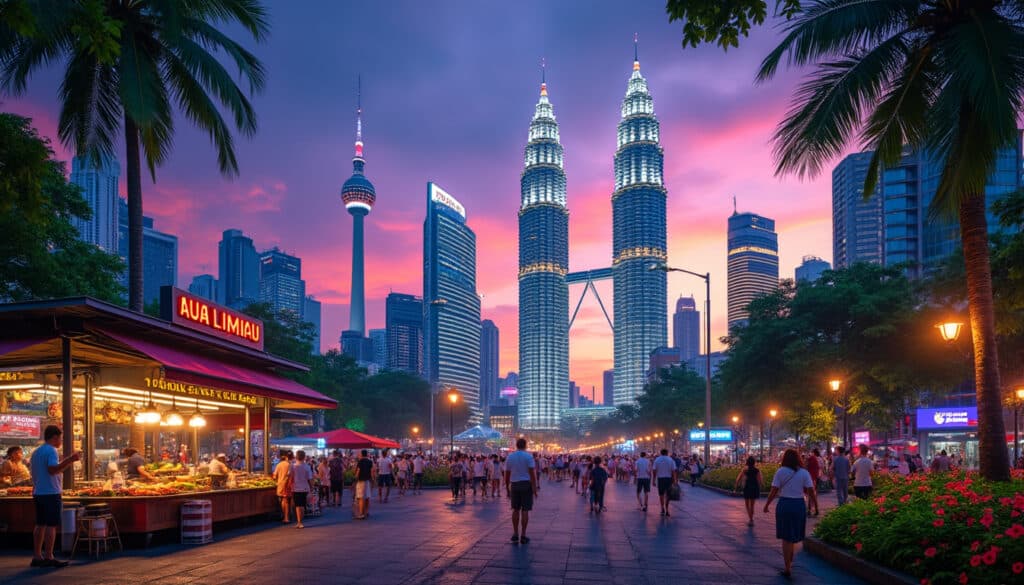
Basic facts about Kuala Lumpur
Kuala Lumpur, a vibrant metropolis and the capital city of Malaysia, is not just a hub of culture and commerce but a melting pot of tradition and modernity. With towering skyscrapers like the Petronas Twin Towers and the historical Batu…
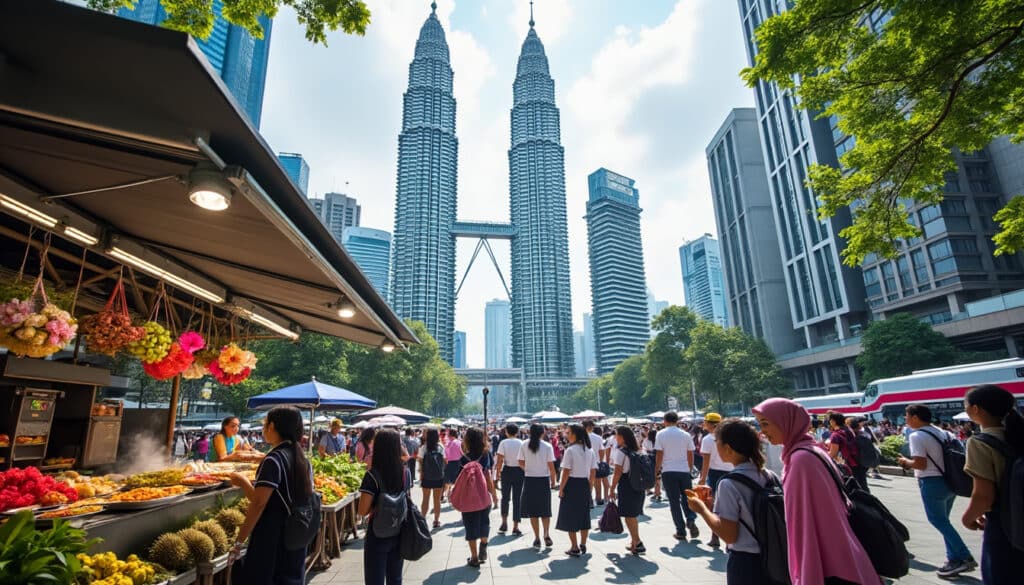
For those considering a move to vibrant Southeast Asia, Kuala Lumpur, affectionately known as “KL,” presents itself as a captivating blend of modernity and tradition. As the heart of Malaysia, this bustling metropolis offers an enticing mix of cultural diversity,…
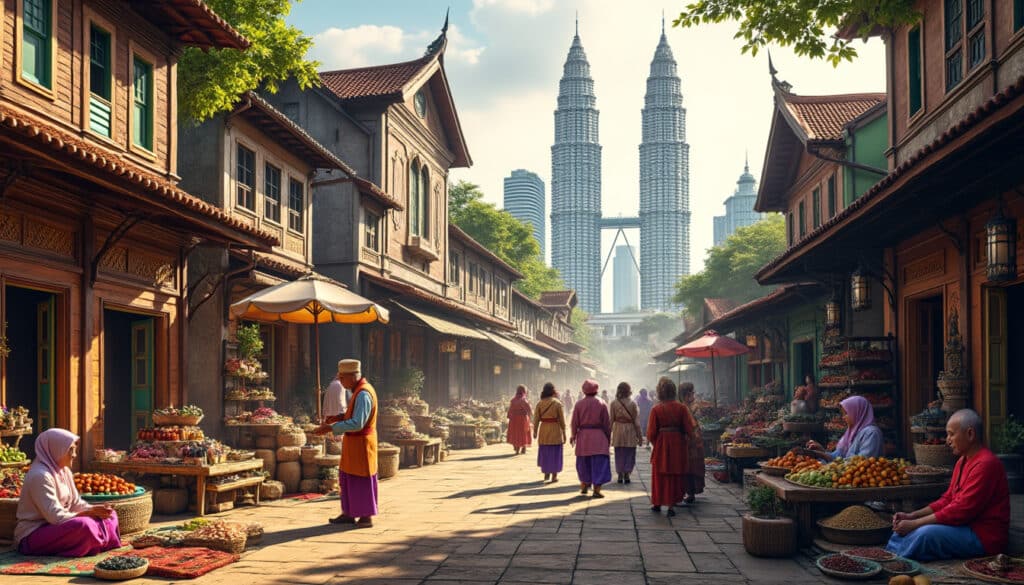
The enthralling tale of Kuala Lumpur’s evolution is akin to a tapestry woven with threads of determination, diversity, and dynamic growth. Once a mere jungle backwater, this city, nestled amid the confluence of the Klang and Gombak rivers, has metamorphosed…
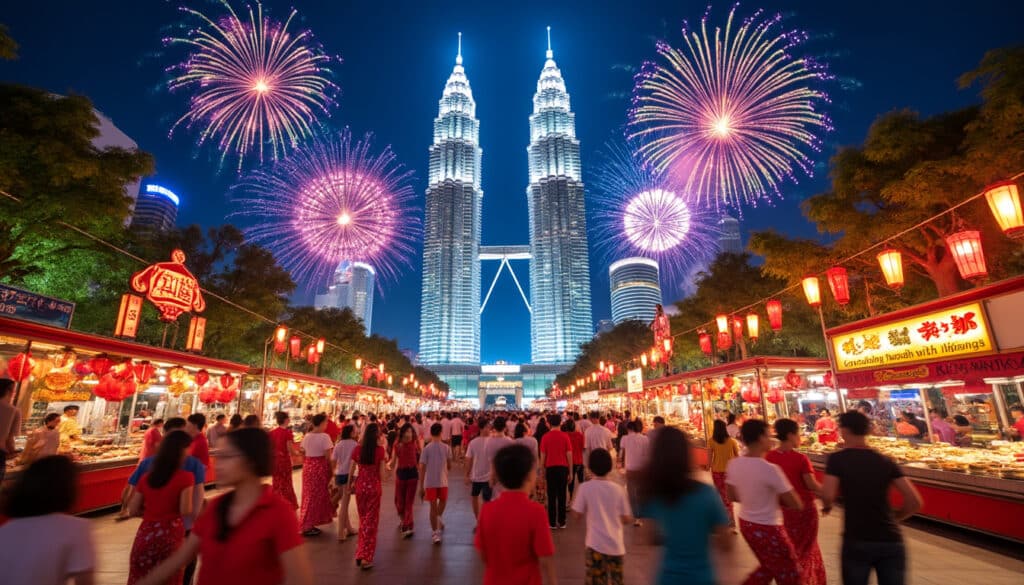
Holidays and celebrations in Kuala Lumpur
Kuala Lumpur is a city renowned for its vibrant celebrations and rich cultural tapestry. As the heartbeat of Malaysia, it hosts a plethora of holidays and festivities that attract both locals and visitors alike. With its diverse blend of Malay,…

Language and spelling of Kuala Lumpur
Dive into the bustling streets of Kuala Lumpur, and you’re engulfed in a symphony of languages reflecting the city’s rich multicultural tapestry. From the austere Bahasa Melayu to the vibrant chimes of Mandarin, each language contributes distinctively to the fabric…
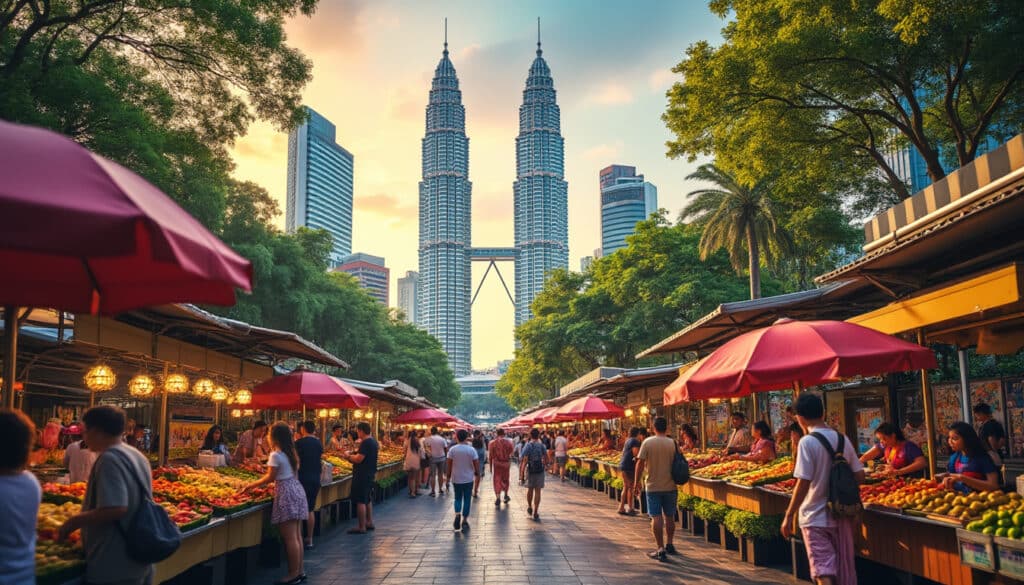
Local tips for tourists in Kuala Lumpur
Visiting Kuala Lumpur offers a unique blend of cultural diversity, vibrant city life, and historical richness. Whether exploring bustling markets, savoring local delicacies, or marveling at impressive landmarks, visitors will find an abundance of experiences. Embrace the city’s warmth and…
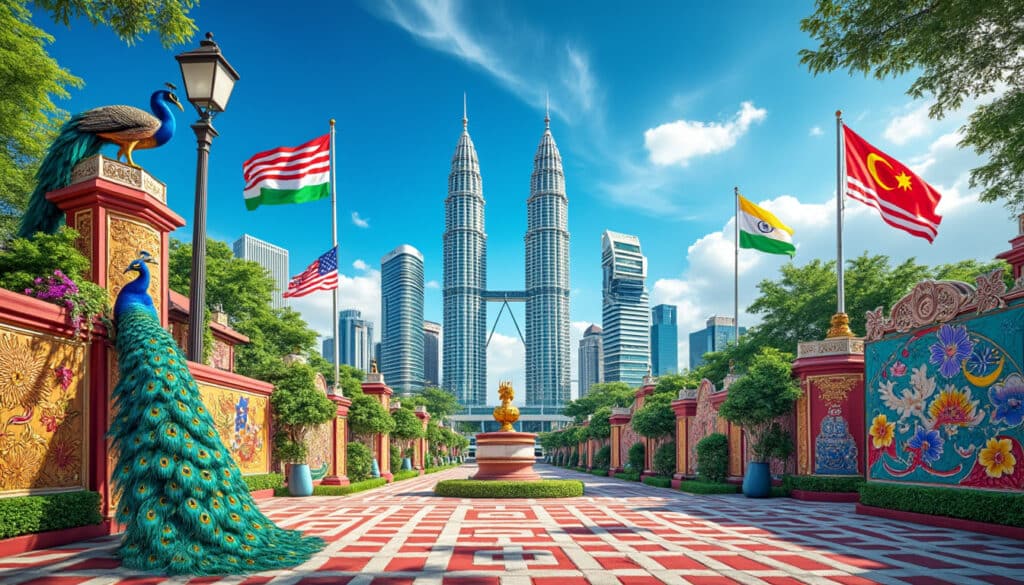
Names, flags, and identity of Kuala Lumpur
The vibrant city of Kuala Lumpur is a melting pot of cultural nuances, intricate flags, and a rich tapestry of identities that reflects its journey from a small tin-mining settlement to a bustling metropolis. As you walk through its streets,…
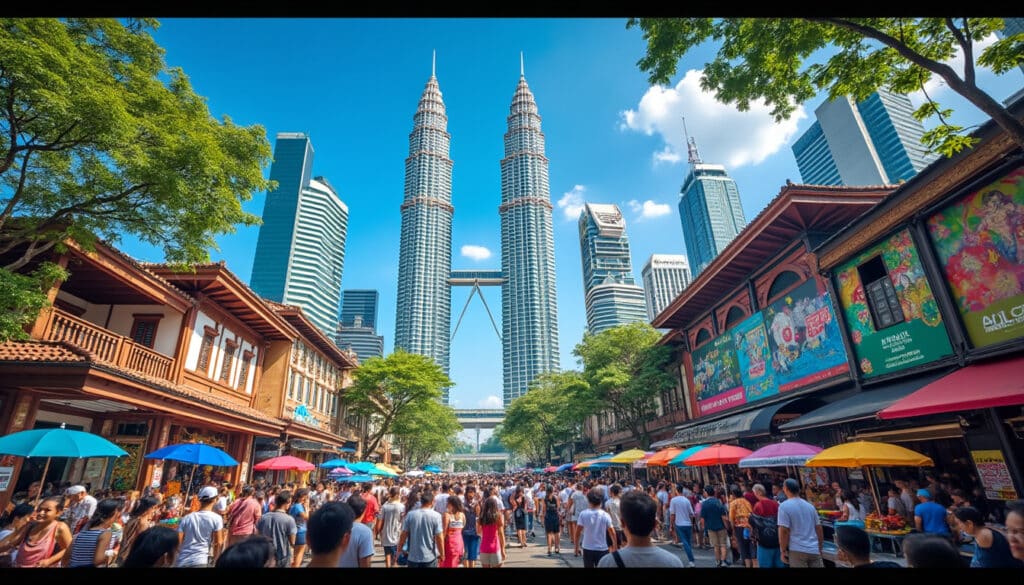
Reputation and identity of Kuala Lumpur
Kuala Lumpur, the bustling capital of Malaysia, is renowned for its unique blend of tradition and modernity. Often abbreviated as KL, this vibrant city stands as a testament to Malaysia’s rich cultural heritage and continuous urban development. From its iconic…

Time and time zone in Kuala Lumpur
Kuala Lumpur, Malaysia’s bustling capital, is not just a hub of vibrant culture and bustling street life; it is also a city intricately connected to its time zone, Maritime Time (MYT). Nestled in the GMT+8 zone, Kuala Lumpur lives by…
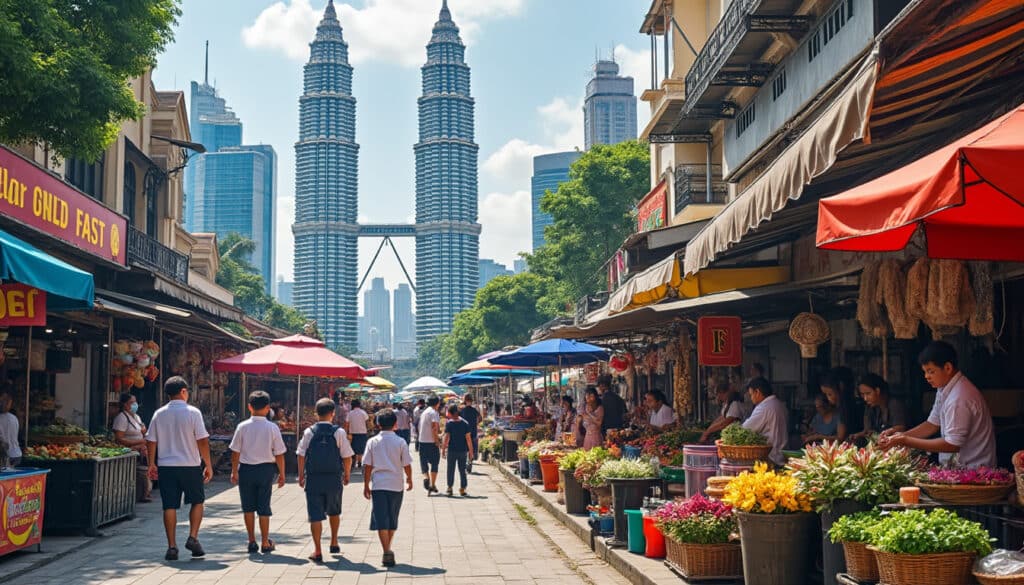
Unusual facts and social issues in Kuala Lumpur
Nestled in the heart of Malaysia, Kuala Lumpur is a city of contrasts, where the ancient mingles with the ultra-modern and diverse cultures blend seamlessly. Known for its iconic Petronas Twin Towers, bustling street markets, and vibrant nightlife, the city…
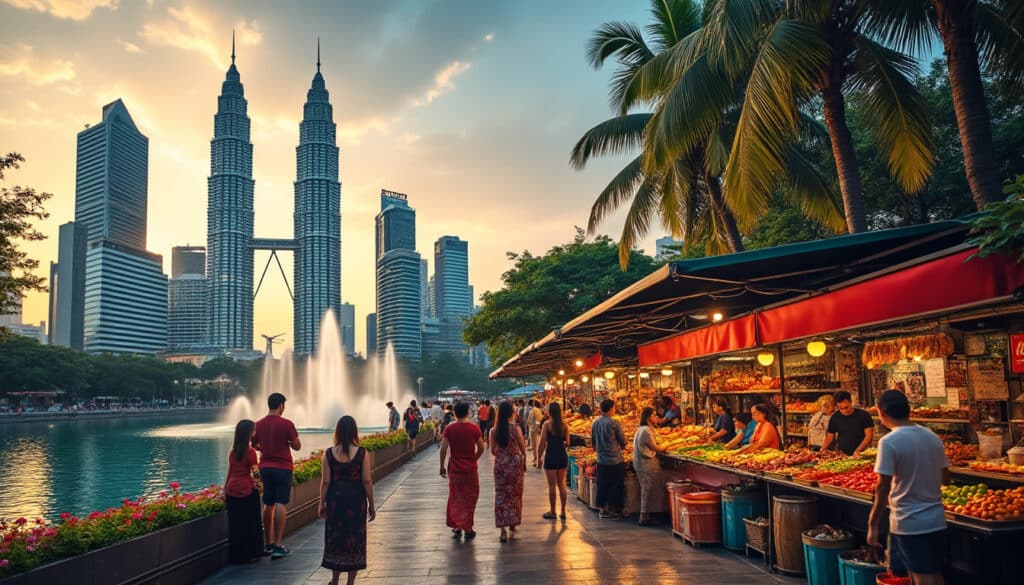
What does Kuala Lumpur look, smell, feel like?
Nestled between the hustle of thriving city life and the whispers of heritage that sing through its landmarks, Kuala Lumpur is a sensory tapestry that invites exploration. Whether you’re wandering through hidden alleyways or soaking in the skyline from afar,…

